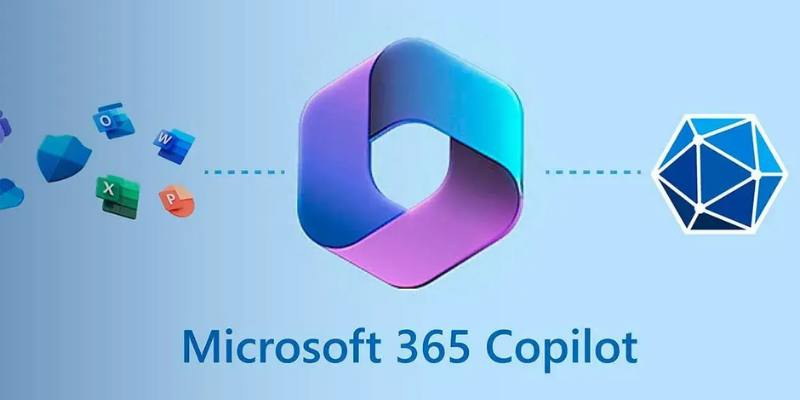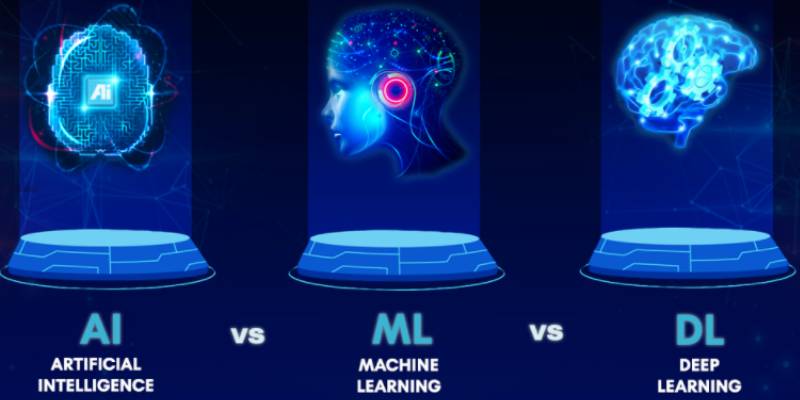Advertisement
So... we’ve all had that customer service call, right? The one where you’re stuck on hold, repeating yourself to three different reps before getting any help. Frustrating doesn’t even begin to cover it. But here’s the thing, we’re slowly moving past that.
AI-powered contact centers are like smart systems that help humans get answers faster, reduce wait times, and yeah... maybe even make those calls a little less painful (we’re allowed to dream, right?).
Now the big question: who’s gonna benefit the most from all this? That’s what we’re going to show you. Let’s begin.
AI-powered contact centers are changing the game. Hospitals, clinics, and even small practices can now use AI to handle appointment scheduling, refill requests, billing questions, and basic FAQs. Think of it like a digital front desk that never sleeps.

This means patients spend less time on hold and more time getting the help they need. It also takes pressure off already-overwhelmed support staff. And no, it doesn’t replace real humans when it comes to sensitive or complex conversations. But for the repetitive stuff? AI’s got it covered. Healthcare wins because time matters. And AI gives some of it back.
Ever had to ask, “Where’s my order?” or “Can I return this?”—and got hit with an hour-long wait or a useless auto-reply? Yeah, same. That’s why retail is embracing AI like never before. These systems can handle massive spikes in customer queries (especially during holidays or big sales) and still provide actual answers.
They can pull up order statuses, recommend products, process returns... even detect angry tones and prioritize those chats to real humans. And yes, the AI gets smarter over time (not creepily smart—just helpful smart). For online stores especially, this means more happy customers, faster resolution, and less cart abandonment. Which, let’s be real, matters a lot in today’s “I-want-it-now” shopping world.
Okay, no one really loves calling their bank. But when you do, you want answers. And fast. That’s where AI-driven contact centers come in. Whether someone’s trying to reset a PIN, check recent transactions, or ask about a loan, they can do it all through voice or chat, without waiting forever.
What’s cool is these systems don’t just "read scripts." They’re integrated with your actual account info (securely, of course), so responses are personalized. Like, you could say “What’s this $19 charge on my card?” and get a clear answer without digging through your statements.
Also... financial institutions benefit big time on the back end—lower costs, fewer mistakes, and smoother workflows. Win-win.
Missed flights. Room upgrades. Refund requests. Travel is full of “I-need-help-now” moments. And people don’t have time to wait on hold while navigating airports or dealing with delayed bookings. That’s why airlines, hotels, and booking platforms are leaning hard into AI-assisted support.

We’re talking chatbots that can reschedule flights in seconds (seriously), virtual agents that help you find available rooms, and voice systems that guide you through lost baggage claims—without the rage. Plus, when things get complicated (like a canceled honeymoon), the AI routes you to the right human agent, fast.
Bottom line? Travel support has always been chaotic. AI makes it more manageable—and way less rage-inducing.
Phone, internet, TV… it’s all essential now (we panic more over Wi-Fi than food sometimes, admit it). So when there’s a billing error or outage, we want help immediately. AI-powered contact centers in telecom are helping customers troubleshoot issues, report problems, or upgrade their plans, without endless menus or being passed around like a hot potato.
Even better, some of these systems can auto-detect service disruptions in your area and proactively notify you before you call (yes... that’s real now). And if a router reset is all it takes? AI can walk you through it.
For telecom providers, this reduces call volume and increases satisfaction (because who enjoys being told to “try unplugging it again”?).
Now here’s one you might not expect, but it makes total sense. Colleges, online course platforms, and educational institutions get tons of repetitive queries. Think: “When does the semester start?” “How do I access my portal?” or “Where’s my grade?” (Some of us still have school nightmares, no judgment.)
AI-powered contact centers can handle that noise. They can also assist with enrollment, payment plans, tech issues (like logging into your class Zoom), and much more. Plus, they work 24/7, which helps with global students and late-night study freakouts.
And let’s not forget: real human staff get to focus on actual education instead of drowning in support tickets. Everybody wins.
Power out? Water leak? Need to start or stop service? Utility companies get thousands of these requests daily. And during storms or outages? It multiplies. Enter AI... which can take those reports, give updates, offer self-service tools, and speed things up big time.
Customers don’t want to “wait in the queue.” They want information now, especially if the AC’s out in July. AI can notify customers automatically, escalate urgent issues, and help teams triage what's happening.
For utility companies, this isn’t just about customer service—it’s also operational efficiency. Fewer dropped calls, quicker resolutions, and better data tracking (which matters when your job is keeping entire neighborhoods running).
Okay, insurance calls are the worst—navigating policy numbers, claim forms, and trying to figure out what’s actually covered (or not). AI doesn’t magically fix the complexity, but it does make support easier to access and understand.
With AI-powered contact support, customers can check on claim statuses, ask about coverage, and get help filing claims—all through chat or voice. And since the system can “remember” customer history, the experience feels smoother.
For insurance companies, this reduces overhead and improves retention, because let’s be real: good customer service is one of the few things that actually makes people stay.
So... Humans aren’t being replaced. But they are getting a serious assist. AI-powered customer support aren’t just about cutting costs—they’re about cutting down frustration. For everyone. From the guy trying to cancel his gym membership... to the parent checking on a hospital bill... to the traveler rescheduling a flight from their phone.
The future of support is hybrid. Smart systems + real people = better experiences. And honestly? It’s about time.
Advertisement

Learn how to loop through dictionaries in Python with clean examples. Covers keys, values, items, sorted order, nesting, and more for efficient iteration

Want to organize your pandas DataFrame without confusion? This guide shows clear, practical ways to sort by values, index, custom logic, or within groups

Learn how to concatenate two or more DataFrames in pandas using concat(), append(), and keys. Covers row-wise, column-wise joins, index handling, and best practices

Discover how to install and set up Copilot for Microsoft 365 easily with our step-by-step guide for faster productivity.

Need to save your pandas DataFrame as a CSV file but not sure which method fits best? Here are all the practical ways to do it—simple, flexible, and code-ready

Explore the key differences between AI, machine learning, and deep learning with practical insights and use case examples.

Discover top industries for AI contact centers—healthcare, banking fraud detection, retail, and a few others.

Learn how to use matplotlib.pyplot.subplots() in Python to build structured layouts with multiple charts. A clear guide for creating and customizing Python plots in one figure

Need to share a ChatGPT chat? Whether it’s for work, fun, or team use, here are 7 simple ways to copy, link, or export your conversation clearly

Explore Pega GenAI Blueprint's top features, practical uses, and benefits for smarter business automation and efficiency.

Learn how to connect Kafka to MongoDB and build a simple, reliable data pipeline that moves real-time messages into a NoSQL database efficient-ly

Struggling with Copilot's cost or limits? Explore smarter alternative AI tools with your desired features and workflow.